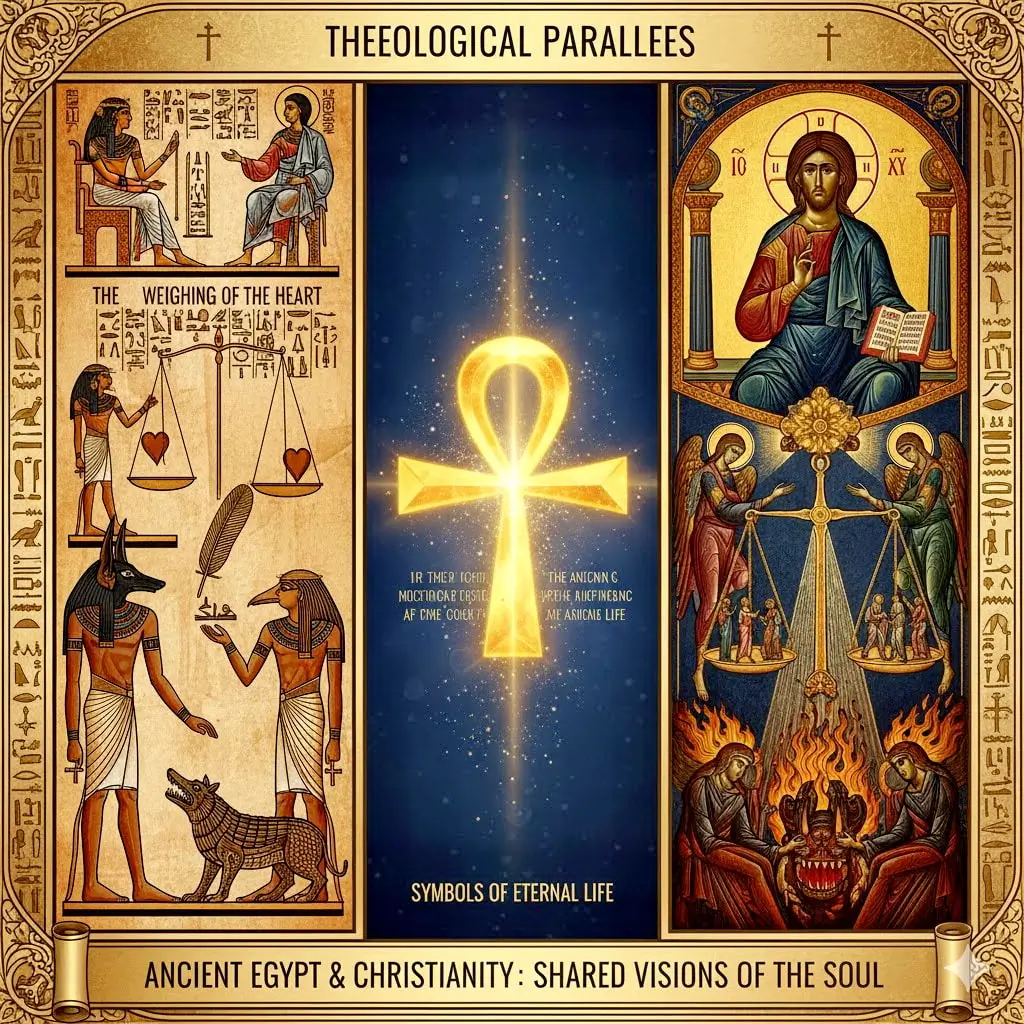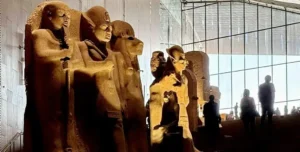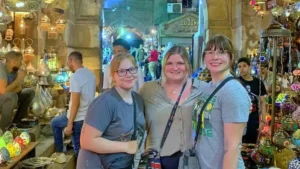Visual Iconography: The Image of the Divine

When early Christians sought to depict their new faith, they naturally looked to the artistic language they already knew. As a result, the visual link between Ancient Egypt and Christianity is striking and undeniable.
From Isis to Mary: The Mother of God
Nowhere is this connection clearer than in the image of the mother and child. For millennia, Egyptians worshipped statues of the goddess Isis nursing her divine son, Horus (Isis Lactans). She sat on a throne, holding the child on her lap, offering him her breast.
When Christianity took root, Egyptian artisans simply continued this artistic tradition. They created the earliest icons of the Virgin Mary nursing the infant Jesus (Maria Lactans) using the exact same pose and composition. To the Egyptian eye, the transition was seamless. They saw the same archetype: a divine mother protecting a savior son.
From Ankh to Cross
Furthermore, consider the most famous symbol of the pharaohs: the Ankh. This looped cross symbolized “Life” and “Eternal Existence.” Early Christians in Egypt recognized the power of this symbol. They did not reject it; they adopted it.
They adapted the Ankh into the Coptic Cross (or Crux Ansata). They kept the loop at the top to symbolize the eternal nature of Christ’s sacrifice. Thus, a symbol that once promised life to the pharaohs now promised eternal life to the Christian believer.
Theological Parallels: Concepts of the Soul and Afterlife

Beyond the visual similarities, the deep influence of Ancient Egypt and Christianity also extends into profound theological concepts, particularly concerning death, judgment, and the hope for eternal life. These shared ideas made the transition to the new faith more fluid for many Egyptians.
The Dying and Rising God
Ancient Egyptians built their entire understanding of the afterlife around the Legend of Osiris. He represented the prototype of the “dying and rising god”—a divine being who suffered death, was resurrected, and then became the judge and provider of eternal life in the underworld.
- Osiris’s Role: He offered a path to immortality, promising that just as he rose, so too could his followers. This concept resonated powerfully in a land where the cycles of death and rebirth (like the flooding Nile and sprouting crops) were central to existence.
- Christian Transformation: Early Christians found an echo of this powerful narrative in Christ’s death and resurrection. While the theological specifics differ—Christ conquered death to rule the living, and Osiris ruled the dead—the fundamental idea of a divine figure who overcomes death to grant eternal life provided a familiar framework.
Judgment and the Heart
The concept of a final judgment also shows striking parallels between Ancient Egypt and Christianity.
- The Weighing of the Heart: Egyptians believed that after death, the god Anubis weighed a person’s heart against the feather of Ma’at (Truth and Justice). A pure heart allowed entry to the Field of Reeds (paradise), while a heavy, impure heart meant annihilation in the “Lake of Fire.”
- The Last Judgment: Christianity, too, presents a final judgment where deeds are accounted for. The righteous enter heaven, and the unrighteous face damnation. This established understanding of accountability and a divine arbiter provided a strong foundation for the Christian doctrine of the Last Judgment.
The Halo: A Divine Radiance
Consider the halo, the ring of light around the heads of saints and divine figures in Christian art. This ubiquitous symbol also finds its roots in ancient Egyptian solar iconography.
- Solar Disks: Ancient Egyptian gods like Ra, Horus, and Amun-Ra were frequently depicted with a sun disk or radiant circle behind their heads, signifying their divinity and connection to the life-giving sun.
- Christian Adaptation: Early Christian artists adapted this visual convention to denote holiness and divine favor around Christ, the Virgin Mary, and the saints. It became a clear visual cue for sanctity, connecting the ancient concept of divine radiance with the new spiritual heroes.
The Trinity vs. The Triad
Furthermore, the very concept of a divine “three-in-one” may have found a receptive audience in Egypt.
- Egyptian Triads: Ancient Egyptian theology often revolved around divine “triads”—groups of three gods forming a unified spiritual family (e.g., Osiris, Isis, and Horus; or Amun, Mut, and Khonsu at Thebes). These triads represented different aspects of a single divine force or lineage.
- The Christian Trinity: While the Christian doctrine of the Trinity (Father, Son, and Holy Spirit as one God) is unique, the concept of thinking about divinity in terms of three interconnected entities was not alien to Egyptian thought. This familiarity may have made the sophisticated theological explanation of the Trinity more digestible for early Egyptian converts compared to cultures accustomed to vastly different divine structures.































